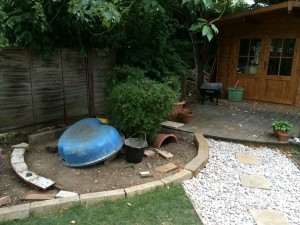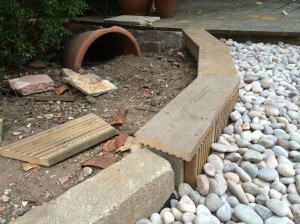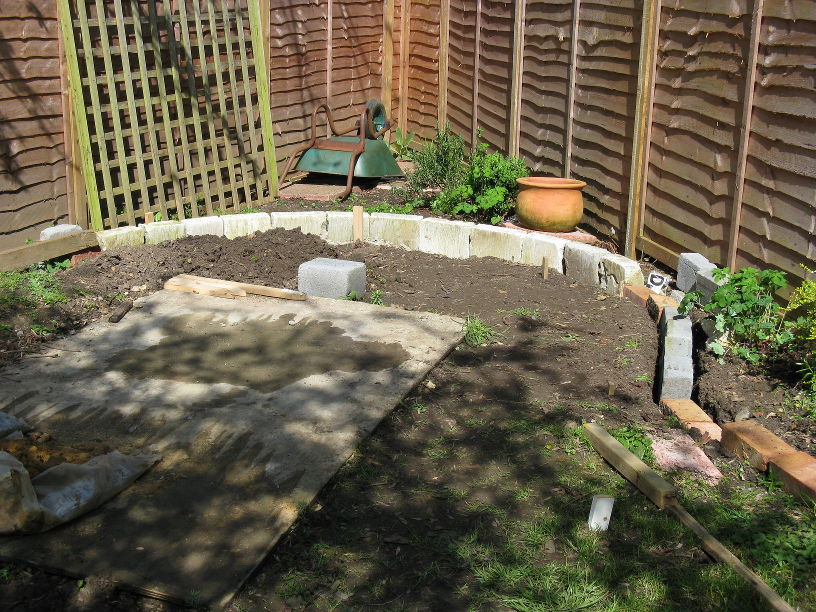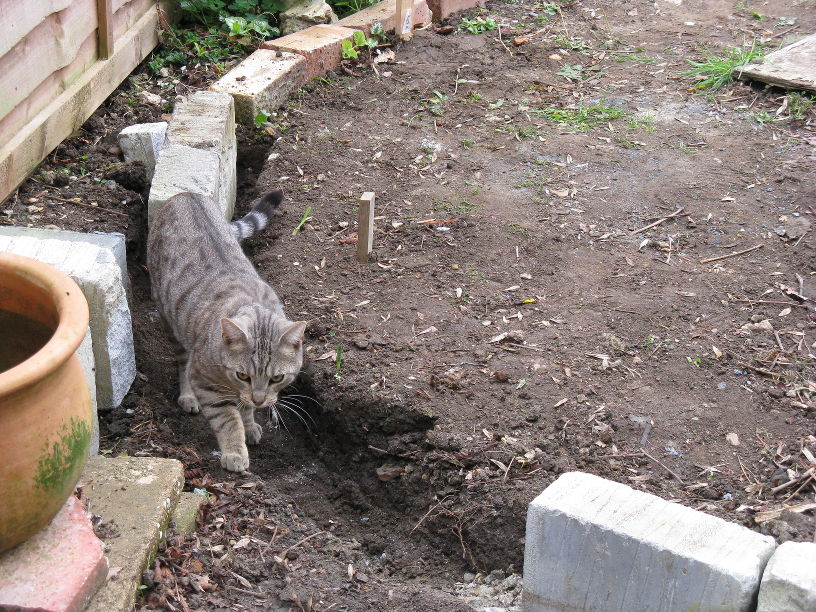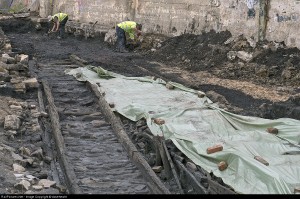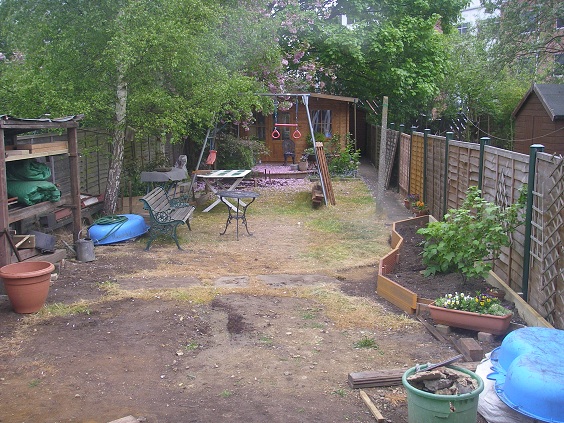For centuries, the idea of a tunnel under the English Channel was little more than a dream: it was variously seen as a way of uniting the two countries either side … or as a way to invade. By the late 20th century, technical ability was proven and political agreement was sufficiently positive that the tunnel was built under the busiest stretch of water in the world. The rail journey from London to Paris used to take all day. Londoners can now get to Brussels in under two hours. When I work in Paris, I can be back home on the outskirts of London the same night.
Because the tunneling technology is established and proven (under seas, under cities and under mountains), a similar concept has been suggested for the gap dividing Russia and the Americas – the stretch of water known as the Bering Strait. Connecting the two largest continents would create an uninterrupted rail network around the world. Such a connection, they argue, would boost trade, reduce freight times from China to California, bring prosperity along the line, and encourage settlement in one of the most remote parts of the world.
Various people have proposed a Bering Strait bridge or tunnel over the years, including William Gilpin in the 1890s, Professor T. Y. Lin in 1958 (PDF), and Dr. Hal Cooper in 2007. My understanding of their work is that they mainly look at the physical challenges of bridging the gap between the two continents, and look at the global benefits. Indeed there appears to be a positive political approach to the crossing, as suggested by Putin and Medvedev in 2009.
The purpose of my article is to look at the the scheme in the cold light of reality, and to explain why I believe it is unlikely to happen.
The construction of the Bering Strait tunnel – or any tunnel under water or under mountains – is not a major challenge. The geology of the rock across the Bering Strait is apparently quite stable, and tunnels of much greater length have already been dug elsewhere (including the Gotthard Base tunnel). The tunnel itself isn’t the problem: the real challenges are elsewhere.
The challenges essentially fall into the following categories:
Finance
The cost of building railways through the countryside is relatively low in comparison with the financial benefits. The challenge is not the cost, but persuading investors that it will generate a good return. In the early days of railways, it was easy to find investors: railways today are usually paid for by governments. Finance is not usually an obstacle if the benefits are clear.
Financing a scheme such as this should not be seen as a challenge. Far costlier schemes have been financed by willing investors over the centuries. The potential for revenue generation of a railroad is obvious, and freight is likely to be the main revenue-earner (the tourist potential of this uninhabited route is unproven). The question, however, is whether the cost can be justified in the light of existing freight options. Transporting containers by ship is extremely cheap, but slow. The length of the railroad rules out its use for perishables between China and the USA, so the main financial competition will be against the well established shipping routes. If investors can be persuaded to invest, then finance won’t be an issue.
Gauge difference
A technical challenge arises in the connection of Russian railways with American railways: wheels and track on the Russian system are about 20mm further apart than on the American system, so locomotives and wagons on one cannot run on the other. Whilst this may at first seem to be a major problem, the same problem already exists at the Polish-Russian border, and at other places around the world (for example, India uses several different track gauges in the same country). Various solutions already exist to this problem: goods can be transferred to another vehicle; the wheel-sets or bogies can be replaced relatively quickly, and there is even a system that changes the gauge of the wheels whilst they are in motion!
It should also be pointed out that border controls, change of locomotive, change of crew and other non-technical activities provide more than enough time to address the “change of gauge” needed for a train to continue beyond the border. In practical terms, I believe that the track gauge that is used in the tunnel is likely to be determined by whoever builds (or rather, whoever finances) the tunnel. If the Russians build the tunnel, the gauge-change may occur at an existing town near the Alaskan-Canadian border. However, this is simply a technicality. As is proven elsewhere in the world, gauge difference is not a hindrance to the construction of the Bering Strait rail connection.
Competition against established shipping (rail 10 days – shipping 20 days)
Nobody is going to spend billions on a new tunnel unless it is going to bring some benefits. The main arguments for building the tunnel seem to be centered around faster transport between China (where stuff is made) and the USA (where stuff is bought). At present, such a journey takes about 20 days by ship. The proposed Bering Strait route would reduce this to about 10 days. This is still far too long for perishables (e.g. food, flowers, newspapers, which usually go by air). Most of the goods are likely to be container-freight or maybe minerals such as coal, or bulk grain. The extra 10 days in transit by sea makes little difference to the quality of the goods, and hence their value. Would customers pay a premium for 10 days transit instead of 20 days transit for bulk imperishable cargoes? Maybe they would – a route was established in 2008, transporting container goods by rail from China to Germany. The jury is still out on this point.
The route is largely uninhabited
Whilst analysing the geography of both Alaska and Chukotka I became aware of a factor that does not appear to have been addressed in the proposals for the Bering Strait scheme.
Prior to the construction of the Channel Tunnel between England and France, both Dover and Calais were already well-established port towns, serving a healthy shipping traffic across the channel, as they had done for thousands of years. These towns are barely 26 miles (42 km) apart, and on a good day one can be seen from the towers of the other. A number of major population centres also exist on both sides. This is not the case with the Bering Strait. There are no settlements at all within thousands of km of the Strait, apart from traditional Inuit (eskimo) tribes. The nearest railroads are even further away:
On the Russian side, the Trans-Siberian railway follows line from Moscow, south of Siberia, across the largest country in the world, reaching Vladivostok at its Eastern point. Between Vladivostok and the Bering Strait are a few small settlements which exist mostly for the gas industry. The largest such settlement, Magadan, is 1000km from Vladivostok. Anadyr is only 300km from the Strait. There are no roads connecting these towns: the only way in and out is by boat or aeroplane. The nearest Russian railroad to the Bering Strait is 3000km away (in Vladivostok).
On the American side, the nearest railroad is at Fairbanks in Alaska, about 1500km from the Strait. This line, possibly the most Westerly railroad in the world, connects Fairbanks to the coast at Anchorage. This line is separated from the rest of the US/Canadian rail network by a gap of over 2000 km. So on the American side, the situation is even worse: The Bering Strait is some 3500km from the rest of the US network. That’s the same as the distance from Los Angeles to Florida.
Anyone building the Bering Strait tunnel would first need to build nearly 7000km of line from the existing rail network. These distances are like London to Delhi, or twice the distance across the USA, but without any significant towns along the way. Power infrastructure along the line would be required. It would be necessary to build construction sites along the route. Everything (manpower and support staff, concrete, timber and steel) would need to be brought in. Without the tunnel, there is little incentive to build the line into the wilderness. But without the infrastructure, it is difficult to build the line. A compelling business case for both the tunnel and the connecting lines is essential.
150 years ago, railways were opened up across the Wild West, and this spawned towns across the USA. But the land there was fertile, and the climate was friendly. There is a reason why Chukotka and Alaska are empty. The population has only increased because of oil and gas. On the other hand, land is cheap in that part of the world…
Climate
This is perhaps the deal-breaker for the Bering Strait connection. Climate would be a major challenge to the routes connecting the Bering Strait tunnel to the rest of the world. Strangely, the Schiller Institute publication makes no mention of the words “climate” or “weather”, and shows nice pictures of trains running through green fields. A quick virtual holiday and a search in Google Images helps us to see what the climate is really like. The climate data available in Wikipedia, for example, shows us that Fairbanks get under four hours of daylight in winter, and the temperature goes below -20 C.
Assuming that a high-speed freight line might be capable of 150km/h, the journey from, say,Vladivostok to Fairbanks would take several day to complete. There are very few inhabited settlements along that route. Journeys during the winter months would be predominantly in darkness. The tourism brochures would be interesting …
Summary
Finance, technical challenges, tunneling, different track-gauge, different languages and the vast distances are all surmountable challenges.
However, the greatest challenge to building the Bering Strait link is the issue of climate. Climate is the reason why mankind has not ventured into this part of the world. Climate is the reason why the Trans-Siberian Railroad has to be rebuilt every year (and the Bering Strait line would go much further North). Sending goods by ship is adequate for the world at the present time, and I see not major benefit in building the Bering Strait line.
There is an argument that the line should be built because we can – as a testament to man’s victory over challenges and over his environment,. If the Bering Strait line is ever built, I believe it would be built with Russian money, because they stand to benefit the most from it. But if I were asked to invest in it, I would say no.

